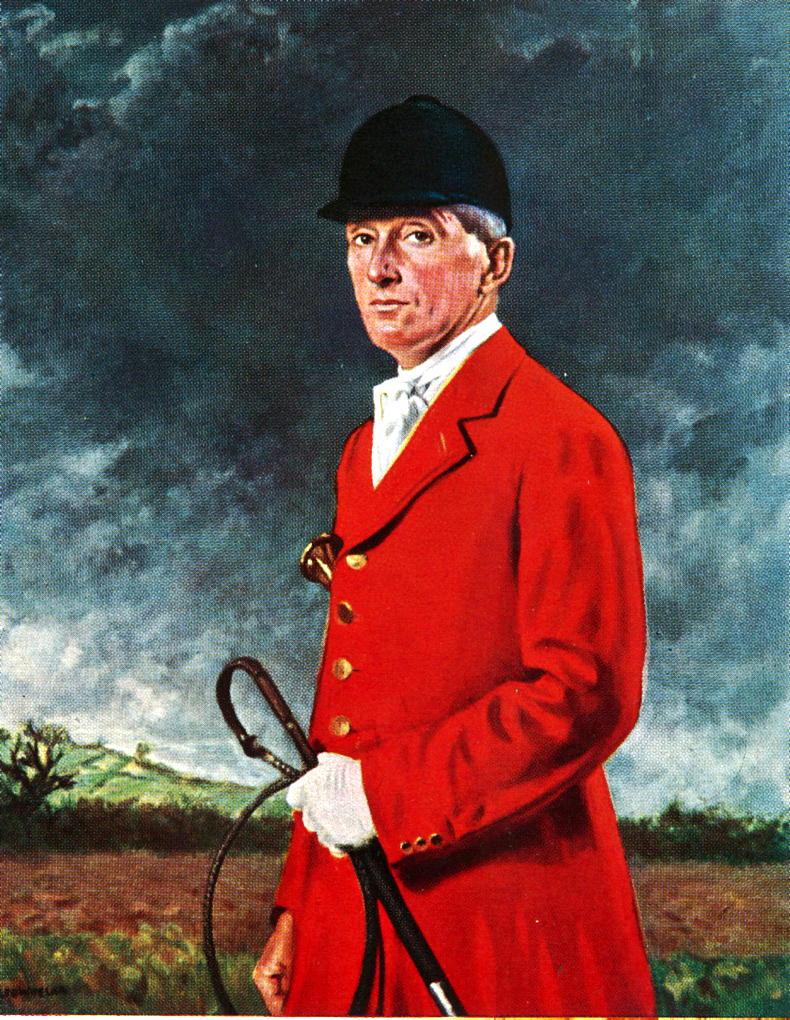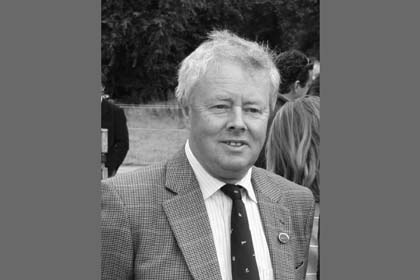THERE can be few, if any, people that have had as much influence on the formation of the modern RDS and Irish show jumping in general as Judge William Wylie KC.
But, who was the famed judge, now only remembered by lending his name to the Wylie Perpetual Challenge Trophy, first presented in 1938, to be awarded to the first prize winner in the Civilian Championship Jumping Competition?
A keen hunting man, Judge Wylie was master of the Ward Union from 1925 right up to 1939. The Judge, with RDS Secretary, Edward Bohane, were the main movers in developing the society showgrounds into what they are today, including building the Anglesea stand. The trophy was first awarded to Jack Bamber in 1946 for Roughan. From Ballymena, Bamber was the leading exhibitor of the day, often exhibiting upwards of 60 horses at the show.
Unconventional
To say the judge had an unconventional background is putting it mildly. Born into a Northern Ireland legal family, he was called to the bar and became a KC in 1914, at the relatively early age of 33. From 1915 to 1918, Wylie served as a lieutenant in the Territorial Army with the Trinity College Officer Training Corps in Dublin.
He took part in the defence of the university and its environs (against the rebels) during the 1916 Easter Rising. He was subsequently appointed prosecuting officer at the trial of the leaders of the Rising, resulting in 16 executions of the leaders, including Padraig Pearse.
Judicial Commissioner
Perhaps sensing a change in public mood, particularly in the USA, subsequent trials resulted in parole. These included W.T. Cosgrave and it was probably their mutual love of racing and hunting that influenced Wylie’s future career, resulting in him being appointed a judge of the High Court of the Irish Free State in 1924, serving as a Judicial Commissioner to the Irish Land Commission until his retirement in 1936.
Judge Wylie first became a member of the RDS in 1910. In 1921, he was elected to the Committee of Agriculture and served as a vice-president of the RDS from 1926.
He was elected President of the RDS for 1938-1941 and was also the first chairman of the RDS Executive Committee (later Board of Management), on which he served from 1937-1960.
This was a critical time in the society’s history, as it struggled to shake off its Royal and Anglo-Irish background and adapt to the new Irish Free State. While the annual RDS show had been held in Ballsbridge since 1893, their headquarters remained at Leinster House right up to 1924.
With the fledgling state having no parliament building, the RDS concert hall in Leinster House seemed to fit the bill and it fell to the judge to negotiate a deal, with no less than Michael Collins, for the purchase of Leinster House by the state. Monies accrued allowed the society to build what we now know as the magnificent RDS in Ballsbridge, looked on by many as the finest showgrounds in the world.
It was the judge who persuaded the Aga Khan to put up the iconic trophy for the Nations Cup and, more importantly, persuade W.T. Cosgrave, then government leader, to allow the Irish Army to establish an Army Equitation School based then, as now, in McKee Barracks.
The first Aga Khan competition in 1926 was the first national team for Ireland since the foundation of the State and, with the showgrounds bursting at the seams, the Irish team were second to the Swiss. All the while, the judge was intent in formalising a common set of show jumping rules for Ireland, which eventually adapted to those used by the FEI.
He was instrumental in building most of what we now look on as the infrastructure of the current showgrounds, including the Industries Hall, the Clock Tower and the Anglesea Stand, built by Standish Collen of Collen Construction, a future master of the Ward Union (1962-’67).
He was a founding member of the Irish Shows’ Society and was one of the main movers in establishing the Show Jumping Association of Ireland, which brought all jumping north and south under a unified set of rules.
Shadow
However, his political and legal past was to cast a shadow over him and the story, though anecdotal, holds a ring of truth. After the troubles and the civil war, some ardent republicans were discussing the troubles over a pint in a north Co Dublin pub and it was decided that there was unfinished business, as the prosecutor of Pearse and Connolly was still at large and something had to be done about it.
To that end, three were deputed to retrieve the Lee-Enfield rifle from under the hay and, the appointed morning, they followed the judge as he left his farm in Clonsilla and followed him to Jim Ryan’s farm in Muckerstown, where it turned out he was on a horse-buying mission.
As the marksman was getting ready, his spotter, a farmer’s son, realised that a deal was about to be done for the horse and he urged his companion to put off their exploit for another day, as Jim Ryan would lose the sale of the horse.
Something put off never gets done and the judge went on to run the RDS for another 30 years, become a steward of the Turf Club (1951–’54; 1957–’60), a highly respected member of the judiciary and so much more. The story has it, the horse in question went on to win the Laidlaw Perpetual Challenge Cup for the Overall Champion Young Horse of the show the following year. To date, the judge holds the record for winning the trophy five times.
His involvement in the RDS is commemorated by the gate to Simmonscourt Road and a perpetual trophy, which bears his name.


 This is a subscriber-only article
This is a subscriber-only article
 It looks like you're browsing in private mode
It looks like you're browsing in private mode










SHARING OPTIONS: